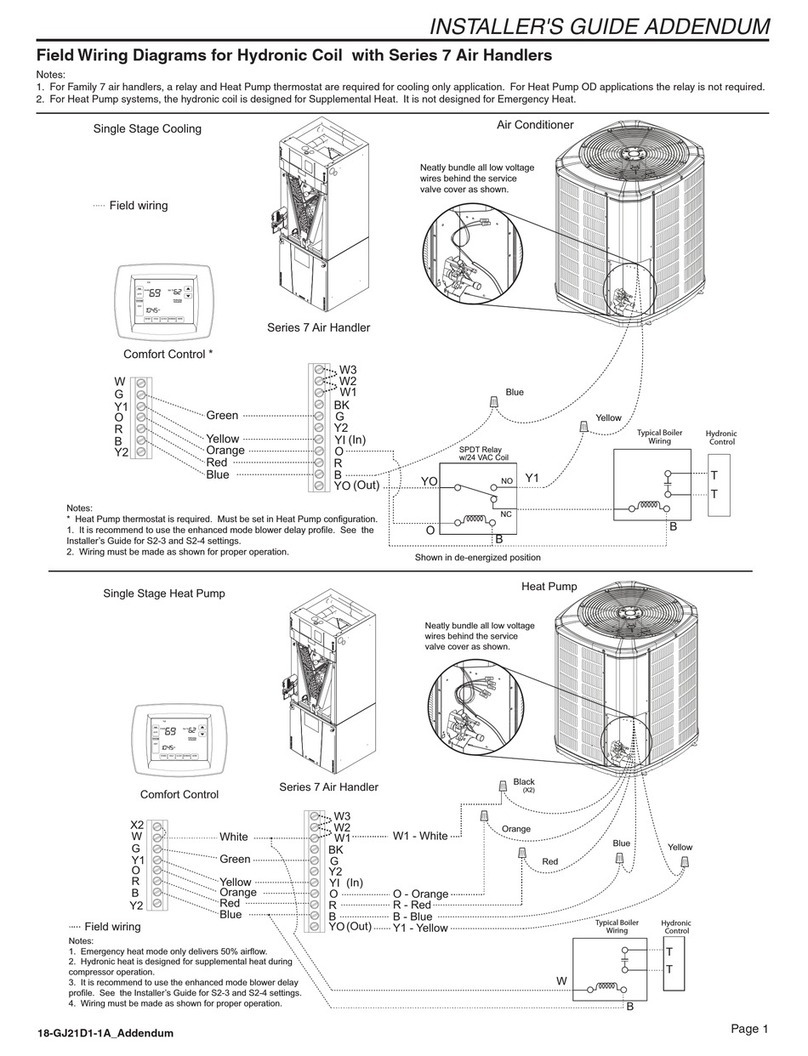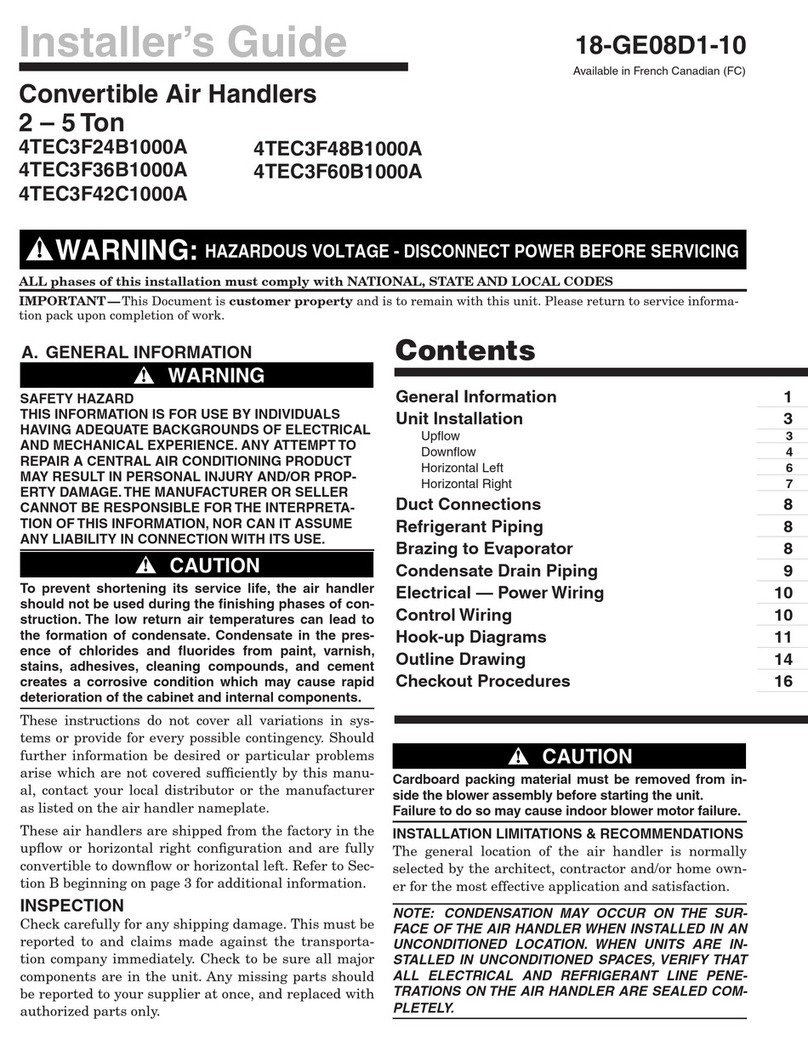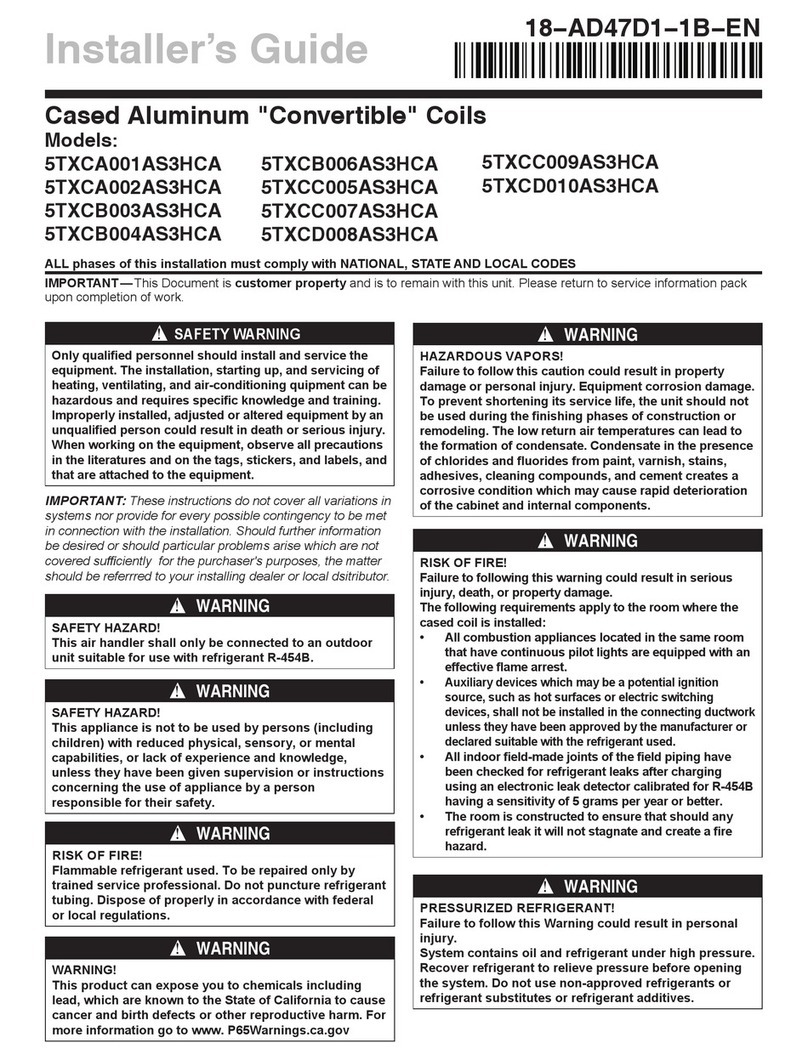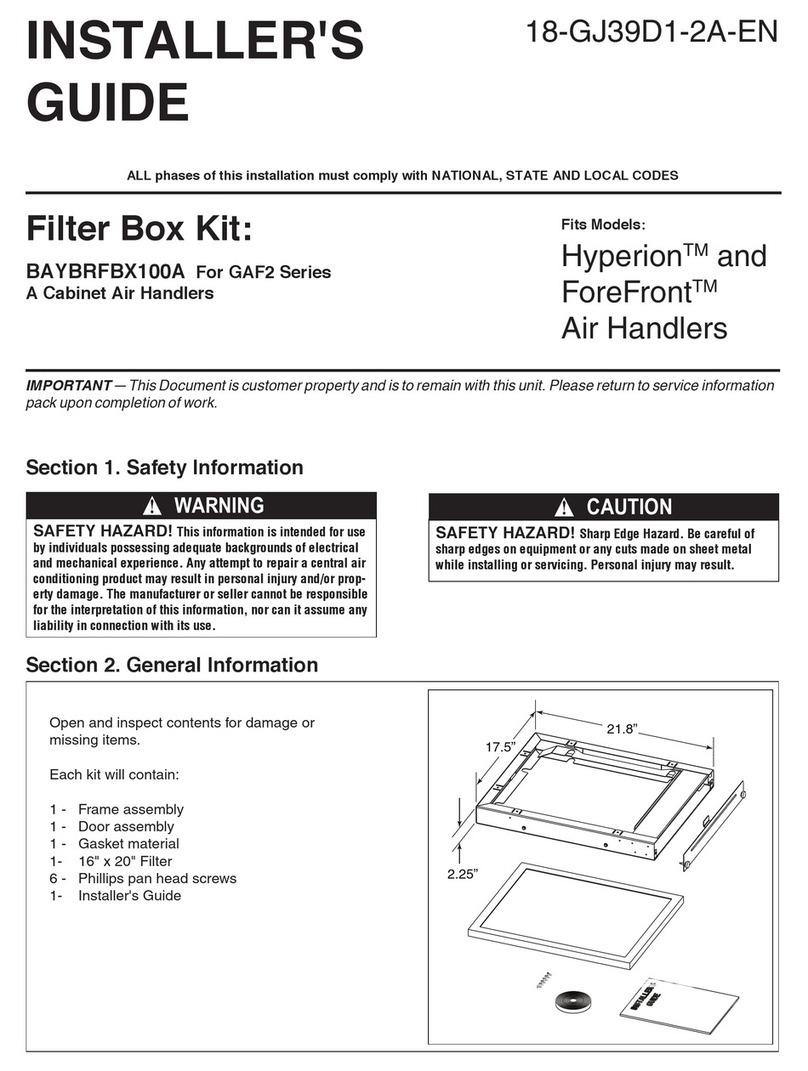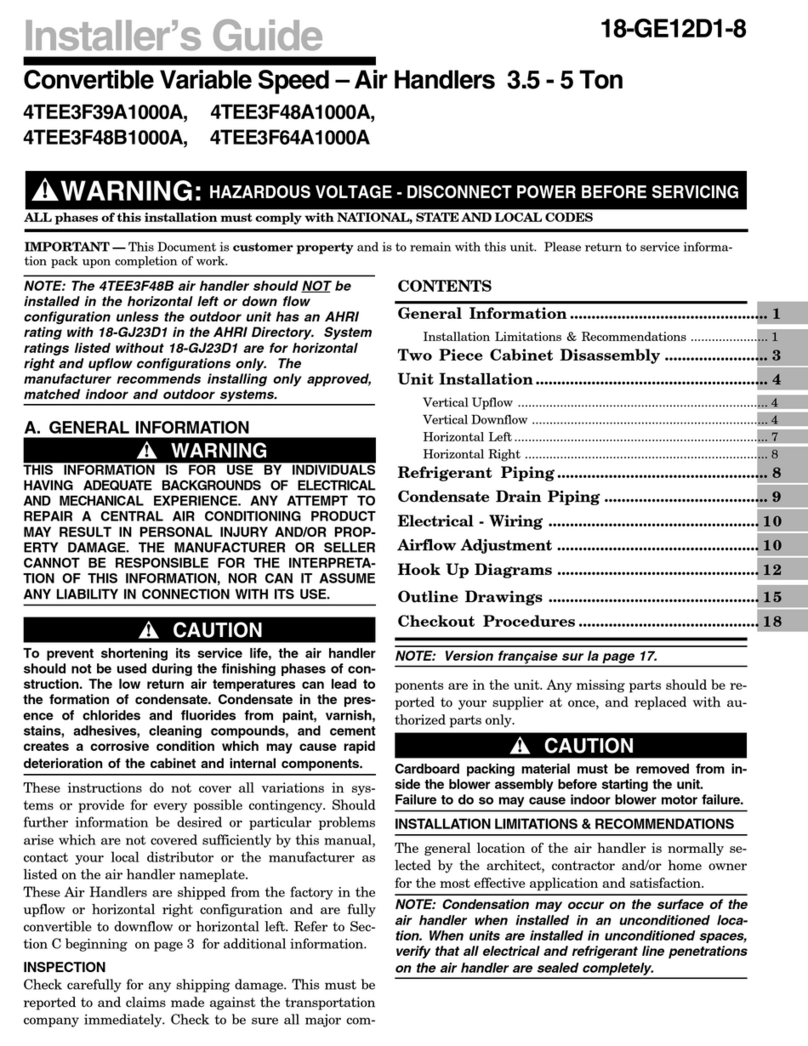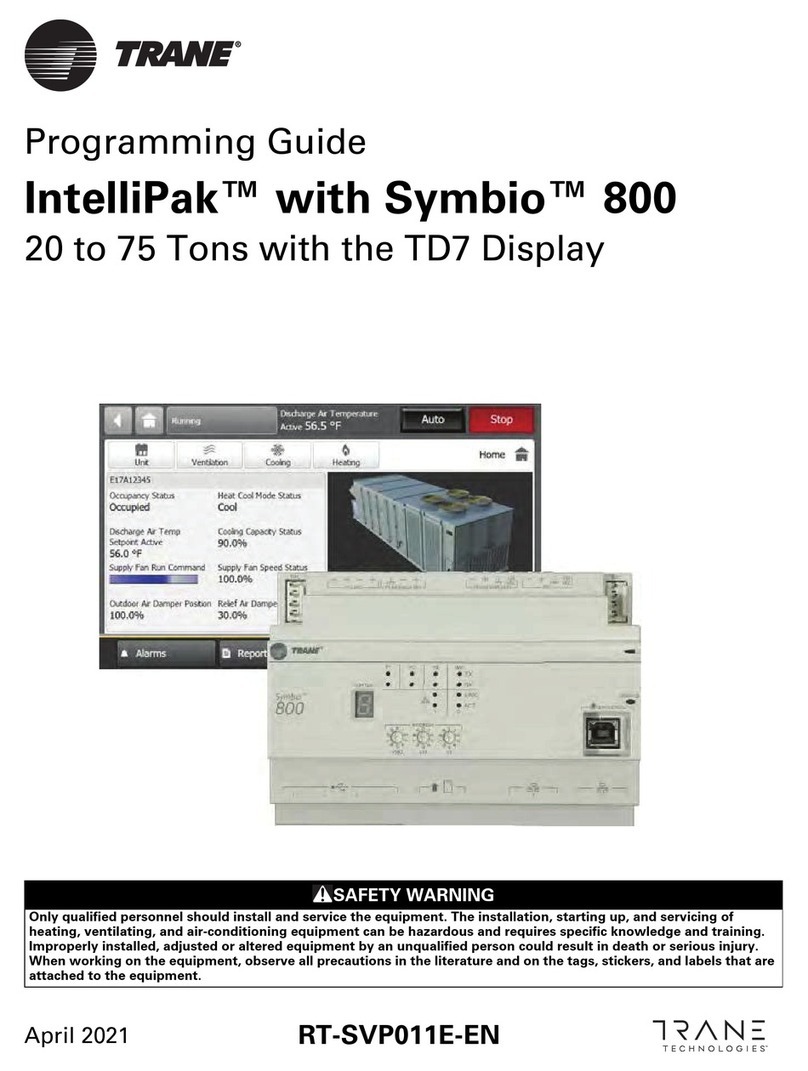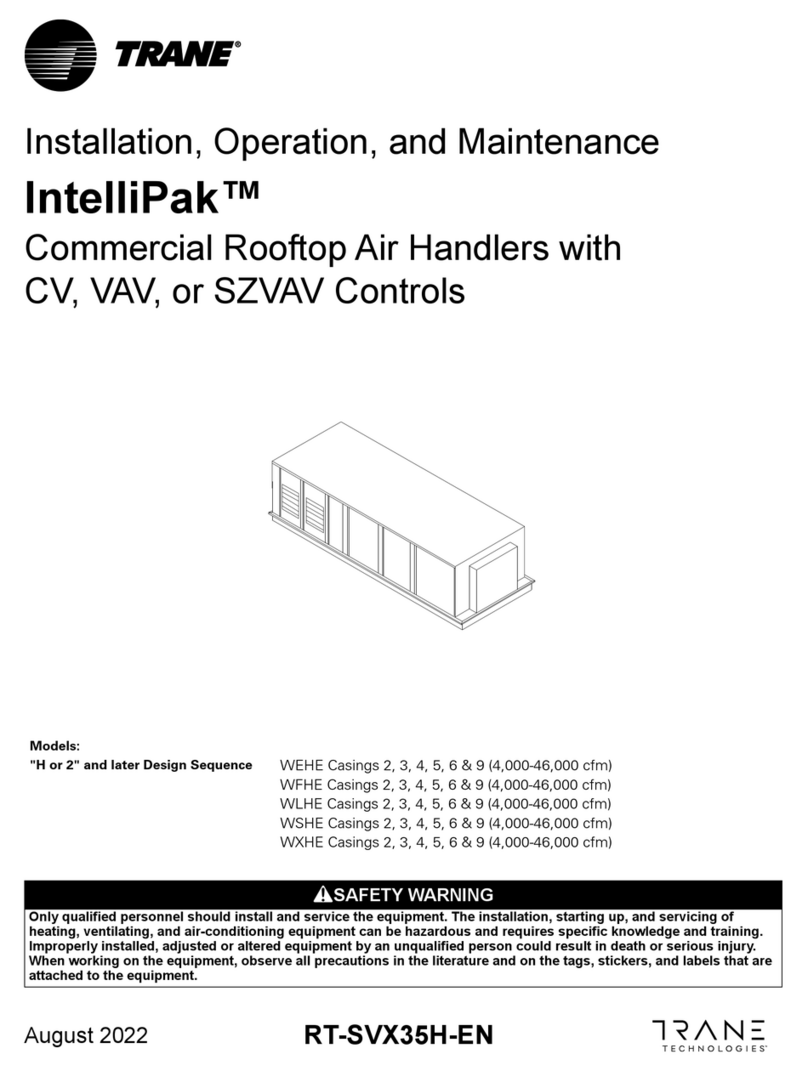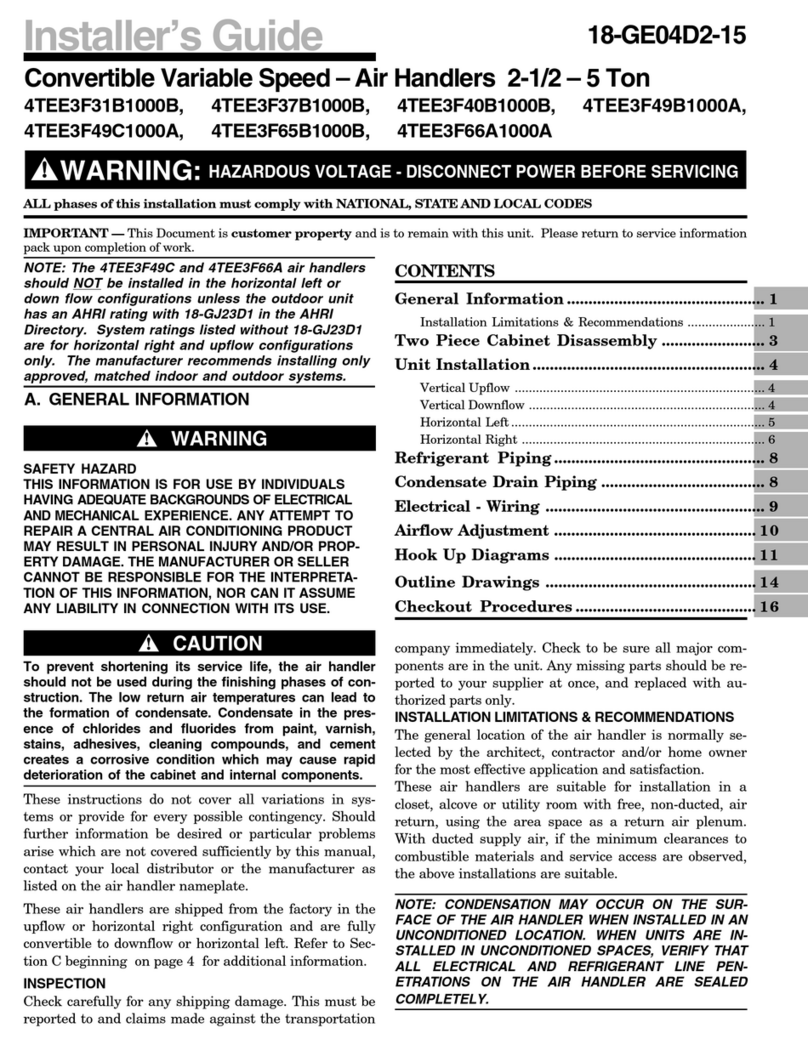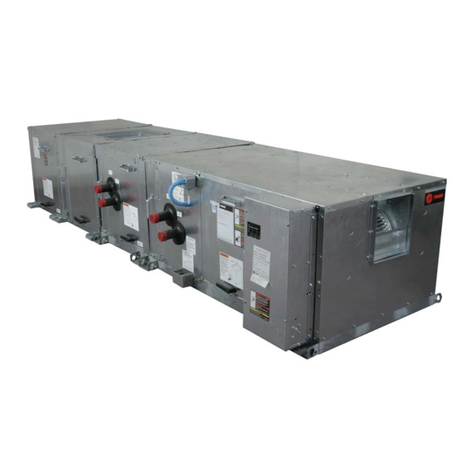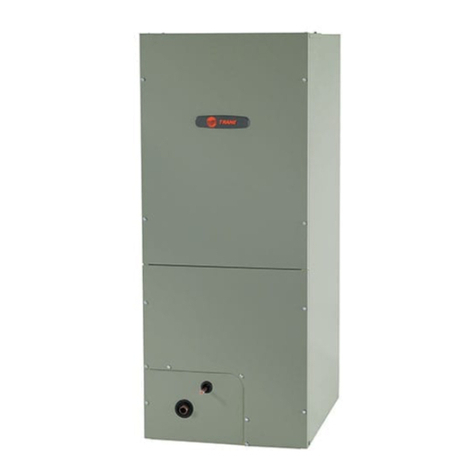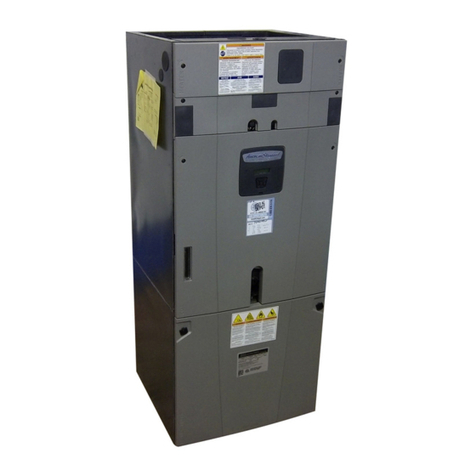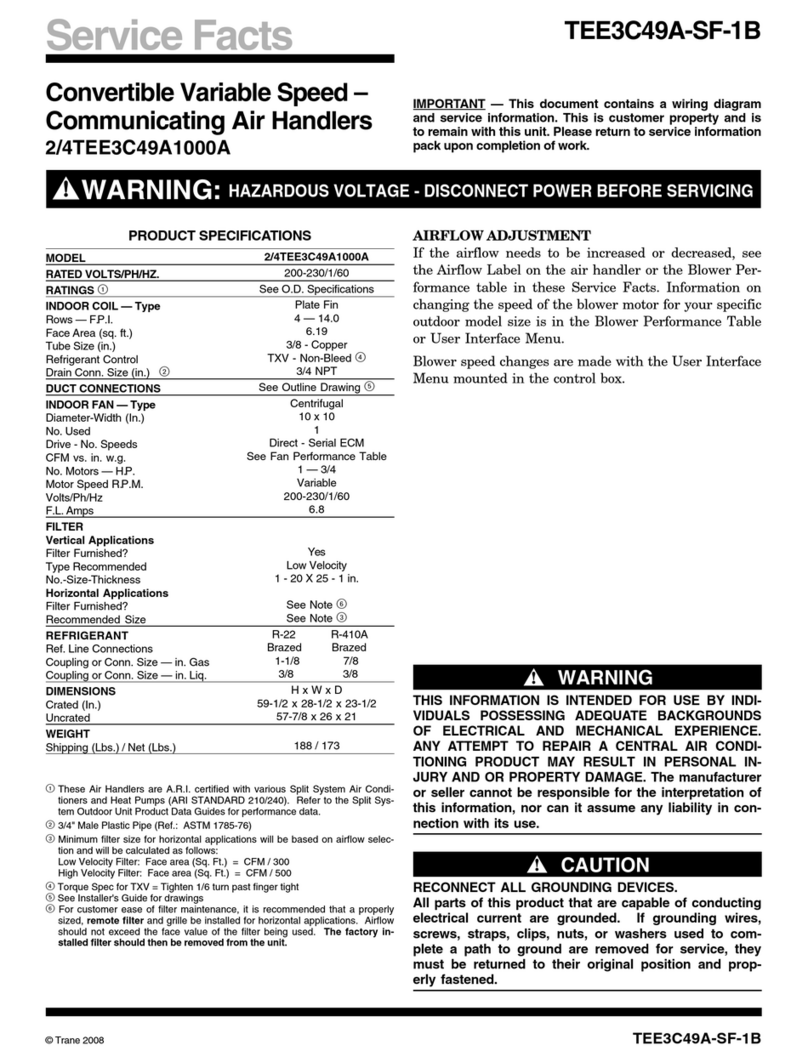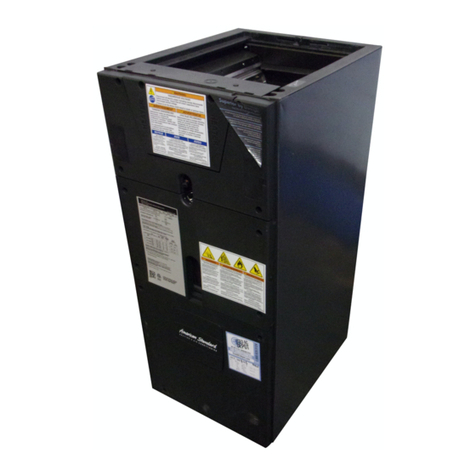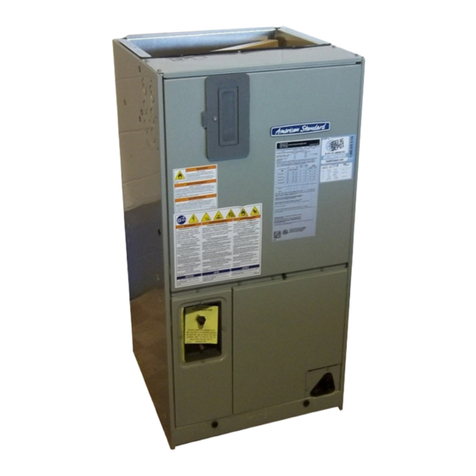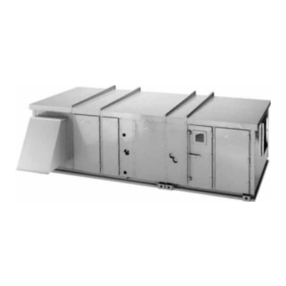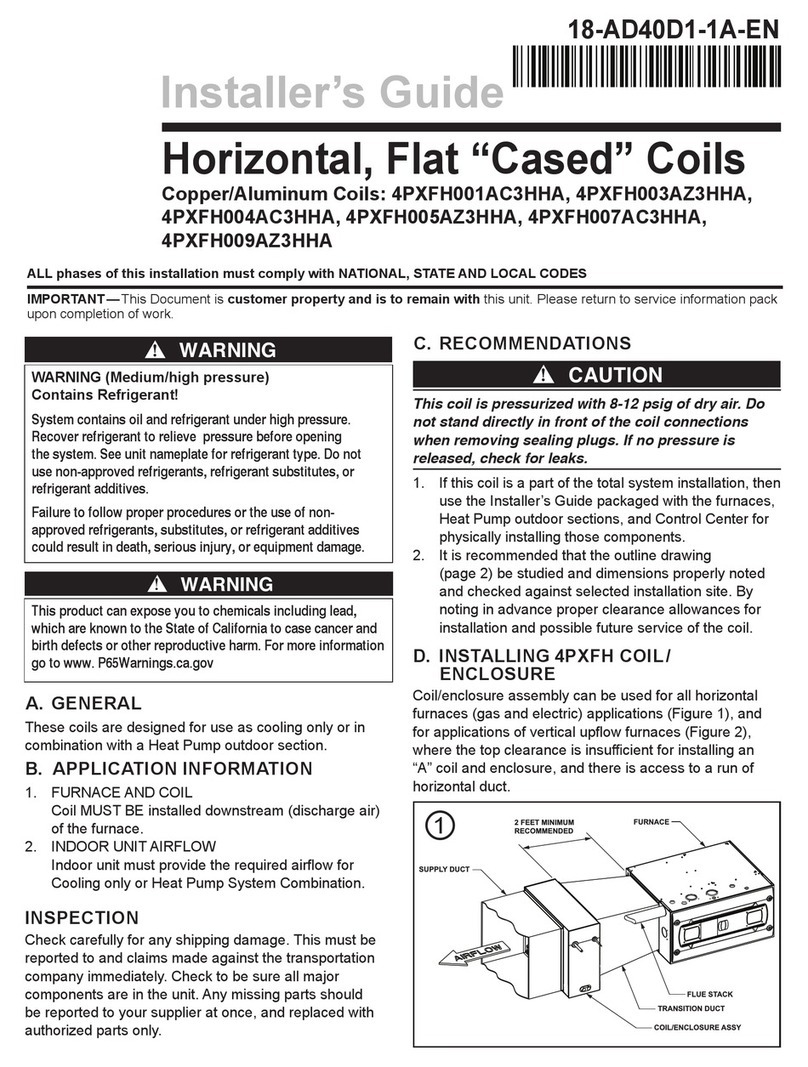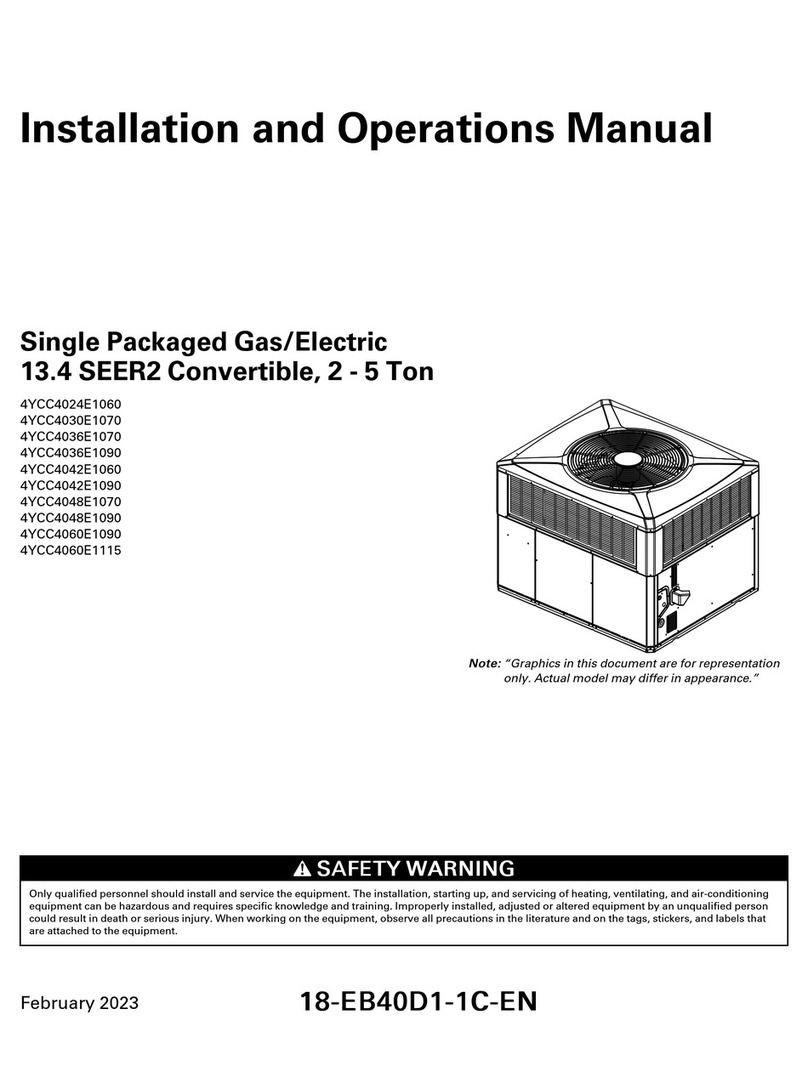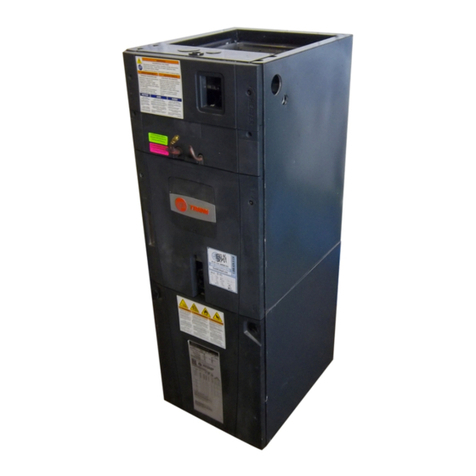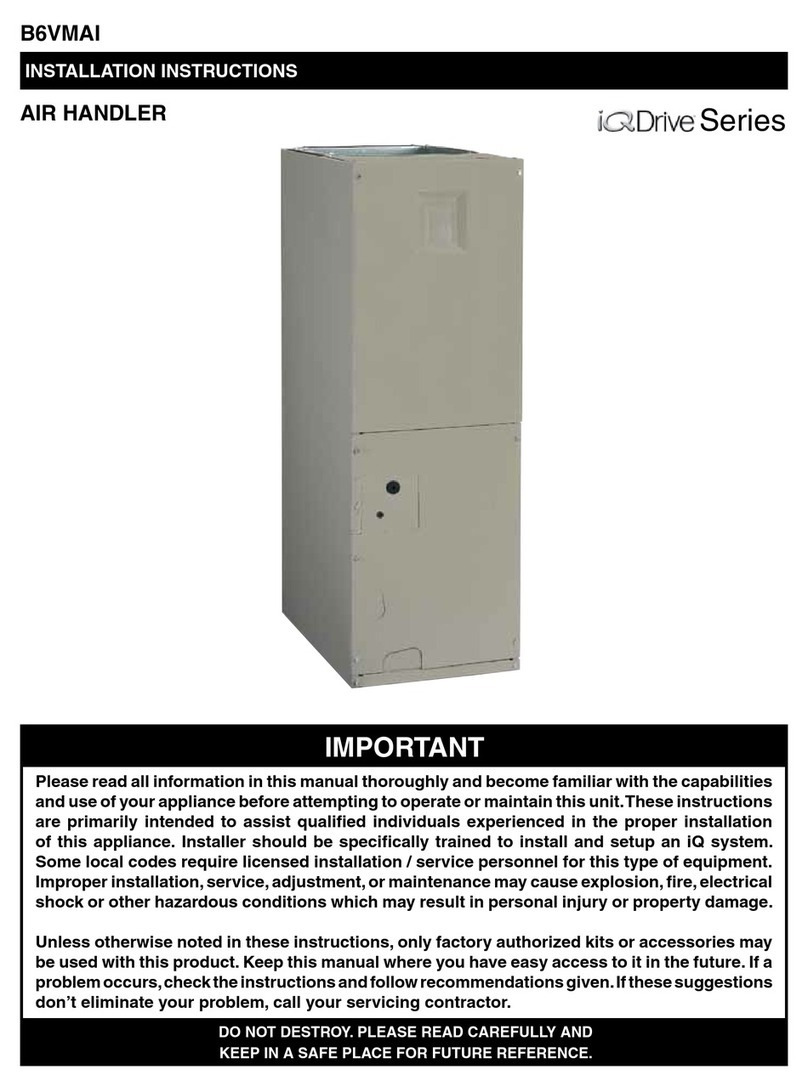
2 18-GD07D1-5
Installer’s Guide
applicable local codes may limit this air handler to
installation only in a single story residence & with-
in conditioned space.
10. If the outdoor unit is to be installed later, or by
others, then installation of the air handler must be
made to allow access for refrigerant lines, or attach
refrigerant lines to air handler when installing.
11. Make sure there are provisions for installing con-
densate drain lines.
12. Route refrigerant & condensate drain lines away
from air handler so they do not interfere with ac-
cess panels and filters.
13. When external accessories are used, the additional
height and width requirements must be considered
in the overall space needed.
14. These units are not approved for outdoor installa-
tion.
15. These units are approved for draw-through appli-
cation only.
B. UNIT INSTALLATION
UPFLOW
a. For maximum efficiency, the horizontal drip
tray should be removed. Tray removal requires
that the coil be removed by sliding the coil out
on the coil channel supports. The tray is de-
tached by removing the two screws at the drain
pan and the two screws holding the two brackets
at the top of the coil.
b. Openings where field wiring enters the
cabinet must be completely sealed. The Re-
frigerant lines must be sealed and Electrical in-
lets need to be sealed both the low and the high
voltage. Location of power entry is shown on the
Outline Drawing.
c. Remove the factory installed baffle assembly
from the apex of the coil by removing the 5/16"
hex head screws.
Replace this baffle with the factory supplied nar-
row coil baffle using the screws removed previ-
ously (See Figure 1).
In addition, these air handlers are suitable for instal-
lation in an attic, garage or crawl space with ducted
supply and return air.
This equipment (for models TGB3F42, 48A only) has
been evaluated in accordance with the Code of Federal
Regulations, Chapter XX, Part 3280 or the equivalent.
“SUITABLE FOR MOBILE HOME USE”
For proper installation the following items must be con-
sidered:
1. If adequate power is available and correct accord-
ing to nameplate specifications.
2. Pursuant to Florida Building Code 13-610.2.A.2.1,
this unit meets the criteria for a factory sealed air
handler.
3. Insulate all ducts, particularly if unit is located
outside of the conditioned space.
4. To ensure maximum efficiency and system
performance, the existing supply and return duct
system static pressures must not exceed the total
available static pressure of the air handler. Refer-
ence ACCA Manual D, Manual S and Manual RS
along with the air handler Product Data and Ser-
vice Facts for additional information.
5. It is recommended that the outline drawing
be studied and dimensions properly noted and
checked against selected installation site. By not-
ing in advance which knockouts are to be used,
proper clearance allowances can be made for in-
stallation and possible future service.
6. The Refrigerant lines must be sealed and Electri-
cal inlets need to be sealed at both the low and the
high voltage.
7. If supplementary heat is to be added, power supply
must be sufficient to carry the load. In addition,
minimum air flow settings, unit and duct clearanc-
es to combustible material must be maintained as
stated on the air handler rating nameplate.
For air handlers not equipped with a factory in-
stalled electric heater, a field installed heater is
available from the manufacturer. Only manufac-
turer-built heaters are approved for use in the air
handler. These heaters have been designed and
tested in accordance with UL standards to provide
safe and reliable operation. A list of approved heat-
ers is provided on the air handler rating name-
plate. Heaters that are not factory approved could
cause damage and are not covered under equip-
ment warranty.
8. If field installed electric heaters are applied, mini-
mum air flow settings, unit and duct clearances to
combustibles must be maintained as stated on the
air handler rating nameplate.
9. If the unit is installed without a return air duct,
For Maximum Efficiency on
Upflow
Remove
and
Discard
Replace
with
Narrow
Baffle
Figure 1
